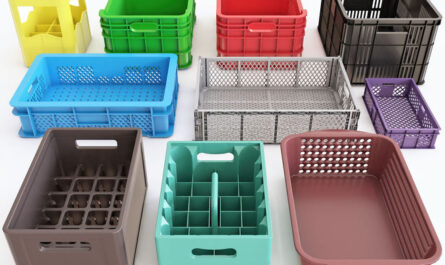What is Cold Chain Packaging?
Cold chain packaging refers to the logistics and supply chain process used to transport and store temperature-sensitive products like fresh produce, seafood, frozen food, photographic film, chemicals, and pharmaceuticals within a temperature-controlled environment. This allows products requiring precise temperatures to be distributed without compromising their quality, safety, and shelf life. From farm to distribution centers to retailers and end consumers, each link in the cold chain uses refrigeration, thermo insulation, and other advanced packaging methods to maintain a set temperature range.
Thermal Insulation is Vital for Cold Chain Packaging Materials
A key consideration in Cold Chain Packaging design is providing effective thermal insulation to prevent temperature fluctuations during storage and transportation. Common insulation materials used include expanded polystyrene (EPS), extruded polystyrene foam (XPS), polyurethane foam, and vacuum insulated panels (VIPs). Their hollow cellular structure traps air pockets that prevent conduction heat transfer. This allows packaging to maintain a consistent inner temperature even when exposed to warmer exterior conditions. VIPs offer the highest insulation performance through their extremely low gas conductivity. They are, however, more expensive than foam-based options. The type of insulation used depends on factors like product sensitivity, shipment duration, and cost.
Active and Passive Systems Ensure Temperature Control
Keeping products within safe temperature limits requires packaging to incorporate either active or passive temperature control systems. Passive systems rely solely on insulation properties to maintain temperature without an external energy input. They are most suitable for short-haul shipments. Active systems use phase change materials, gel packs, refrigerants or Peltier technologies to absorb or release cooling energy as needed. These temperature-controlled containers precisely regulate internal air temperature through devices like data loggers and remote monitoring. Active packaging allows for maintaining the cold chain over long-distance and inter-continental shipments.
Compliance Packaging for Pharmaceuticals has Strictest Standards
Pharmaceutical products demand the utmost precision in cold chain compliance due to regulatory expectations and product sensitivity. Their packaging solutions implement multiple safeguards to guarantee temperature control from point of manufacture to the end consumer. Advanced monitoring options let shippers continuously track location and environmental conditions in real-time. Strict validations as per ISTA protocols demonstrate packages can withstand realistic distribution abuses while still preserving product quality. Complex packaging configurations using insulation, gel packs and data loggers ensure unbroken temperature assurance even in harsh climatic zones or prolonged transit periods. This protects medication effectiveness and consumer safety.
Temperature Monitoring is Paramount for Cold Chain Visibility
Being able to monitor temperature conditions throughout transit gives shippers full visibility and accountability in the cold chain process. Data loggers are frequently integrated into pharmaceutical and food packaging to automatically record and report min/max temperatures at set time intervals. This temperature data can validate that packages maintained the required temperature range as per compliance standards. Cloud-based logistics platforms then analyze these readings to detect any excursions and alert regarding necessary corrective actions. Advanced solutions also use GPS data to map package routes, delays and optimize distribution routes to minimize temperature fluctuations. Real-time monitoring further aids in theft detection and cold chain troubleshooting.
Sustainable Cold Chain Packaging is an ongoing Area of Focus
With rising environmental awareness, packaging manufacturers are exploring more sustainable technologies and materials for cold chain logistics. Bio-based insulation offers renewable alternatives to common petroleum-derived foams. Plant-based phase change materials perform equally well in thermal regulation while reducing fossil fuel dependency. Additives are being developed to improve recyclability of multi-material packaging schemes. Reusable packaging pools allow bulk transport and return, lowering material use. Advances in smart compartmentalization optimize use of space, cutting excess insulation. More efficient refrigerants and self-powering active containers can lower overall energy consumption in temperature-controlled supply chains. Ongoing research aims to balance effective thermal protection with minimal environmental footprint of cold chain packaging.
Cold chain packaging plays a pivotal role in preserving the quality, safety and shelf-life of temperature-sensitive products during multi-nodal transportation and storage. Key elements like insulation, temperature monitoring and control approaches ensure uninterrupted temperature compliance mandated for different classes of goods. Advancing technologies continue enhancing packaging performance for diverse climate conditions over increasing supply chain distances. With food wastage and safety becoming priority issues, optimized cold chain logistics through innovative packaging design will remain an important sustainability focus area.
*Note:
1. Source: Coherent Market Insights, Public sources, Desk research
2. We have leveraged AI tools to mine information and compile it




